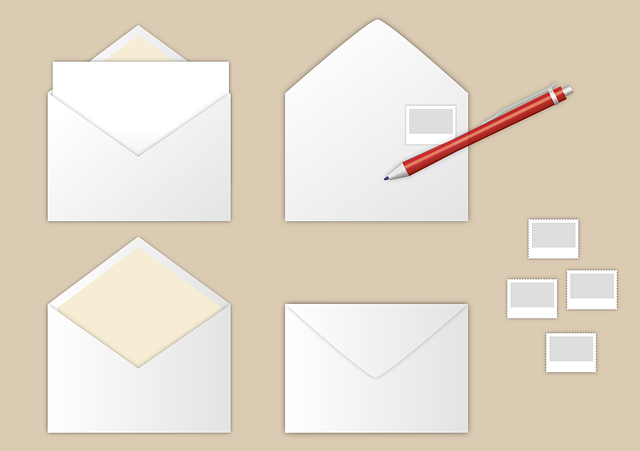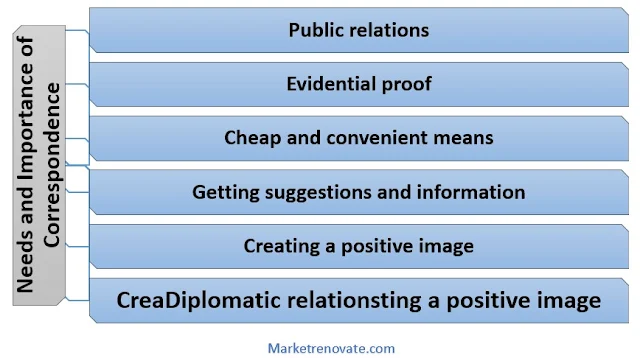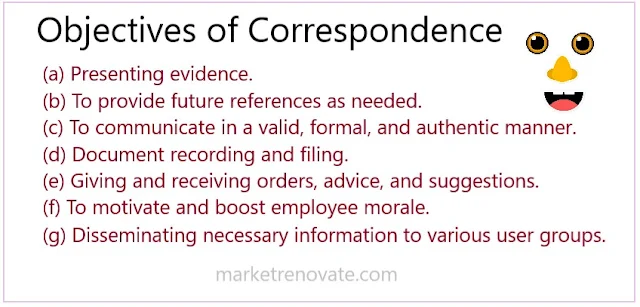Exchanging, relaying, or sharing written news, views, ideas, messages, and so on between individuals and organizations is called correspondence. It is the most widely used, authentic, and widely available mode of communication on the planet. Correspondence is crucial in shaping and changing how people communicate. Therefore, in this article, we will cover 'Correspondence' in detail.
Introduction and Meaning of Correspondence
Most organizations must relay and communicate their points of view, information problems, messages, and suggestions within and outside the organization. Various mediums and means are used to communicate and relay information depending on the organization’s nature, necessity, and financial position.
Correspondence is one of the most popular, accessible, cheapest, authentic, and widely available modes of communication. It is the process of exchanging, relaying, or sharing written news, views, ideas, messages, and so on between individuals and organizations. Thus, correspondence is a written communication in which personal or official information is relayed or communicated between or among people, either internally or externally. This process involves a letter, notice, circular memo, telegram, etc. It is the world’s most widely used, authentic, and widely available mode of communication. As a result, it is critical for all types of organizations, including social, cultural, political, government, business, and our personal lives. Correspondence is the only natural method of communication.
According to P. Arora, “Correspondence can be defined as communicating in writing with an outsider or within the company on topics of mutual interest.”
According to G.P. Chudal, “Correspondence” is “a written form of communication between two parties.” “It is a written method of communicating ideas.”
Needs and Importance of Correspondence
Correspondence is essential in all types of organizations, including social, political, cultural, government, and business organizations and our personal lives. Correspondence is used to exchange most official and business information, news, and messages because it is inexpensive, authentic, and legal. It can be used for both internal and external communication.
It is essential in foreign trade, diplomatic relations, and international declarations at the international level. Government and business offices rely heavily on correspondence. Good correspondence is critical to business success in this modern and competitive age. It aids in the formation of mutual relationships between various parties from all over the world. The following are the primary needs and importance/ significance of correspondence:
(i) Public relations: In this modern, competitive age, business survival and success are impossible without public trust. Correspondence is used to maintain public relations to gain the public’s trust.
(ii) Evidential proof: Correspondence and letters are forms of written communication. We can use them as evidence in court or resolve misunderstandings between people and parties if they arise. To solve the problem, a written letter will be required.
(iii) Cheap and convenient means: Correspondence and letters are low-cost and convenient modes of communication. It can be sent for the meagre cost of a postal stamp via post office or messenger. Moreover, it is very convenient to contact and relay written information because the postal service is available worldwide and in all parts of Nepal.
(iv) Getting suggestions and information: Correspondence is essential for obtaining sensitive and valuable information and suggestions from customers, suppliers, government agencies, and financial institutions. As a result, customers’ financial positions, competitive positions, and customer demand and interest can all be obtained.
(v) Creating a positive image: Good correspondence serves as an ambassador in the office. It aids in the formation of favourable impressions in the minds of customers, suppliers, employees, government agencies, and the general public. In addition, it aids in the maintenance of mutual relationships.
(vi) Diplomatic relations: Correspondence is critical in establishing diplomatic relations between countries. Correspondence is used to establish diplomatic relationships on an international scale. Cheerful, friendly relationships between countries are formed through correspondence.
Objectives of Correspondence
The primary goal of correspondence is to create written records of events or matters. Oral communication is neither authentic nor legally binding. So, written documents are required to present a valid document and evidence. The majority of official transactions are conducted via correspondence.
Thus, the primary goals of correspondence are to create, collect, and preserve documents and records that can be used as evidence in the future. Correspondence has several important goals, including the following:
(a) Presenting evidence.
(b) To provide future references as needed.
(c) To communicate in a valid, formal, and authentic manner.
(d) Document recording and filing.
(e) Giving and receiving orders, advice, and suggestions.
(f) To motivate and boost employee morale.
(g) Disseminating necessary information to various user groups.
Qualities or traits of a Letter
A letter is written with specific goals in mind. So, a good letter accomplishes the goals for which it was written. It should capture the receiver’s attention and compel him or her to complete a task the way the writer desires. As a result, a letter should be practical and possess the qualities specified.
(i) Simplicity: A letter should be written in straightforward language. A simple letter can be read and understood by anyone. As a result, the letter should be natural and free of quotations and poetic and literary terms.
(ii) Clearness/ Clarity: “Clearness” refers to the writer’s intention, neatness, and cleanliness. Thus, a letter should be written in such a way that it can reflect the writer’s intention as well as the letter’s purpose. The writer’s words, language, and expressions should be simple, direct, and understandable. Overwriting, rubbing, or crossing out letters is not permitted.
(iii) Originality: A good letter’s originality is another excellent quality. It refers to how the letter is written in the writer’s style and expression. The writer should not copy any expression from others but be original to express the matter and attract the reader’s attention.
(iii) Conciseness: Conciseness refers to being brief. As a result, the letter should be a manageable length. It should be as brief as possible while still conveying the intended message. Unnecessary words, expressions, and explanations waste the writer’s and reader’s time. Hence, a letter should not be too short, missing important points and facts, or too long, including unnecessary exaggeration.
(iv) Completeness: On the one hand, a letter should be concise but also complete. A complete letter only reflects the writer’s intention and the letter’s purpose. On the other hand, incomplete information renders a letter meaningless and useless. As a result, it must include all relevant matters, facts, and data.
(v) Politeness and courteousness: A letter should be written politely and courteously, with respect and honour for the reader. Therefore, appropriate language, words, and expressions should be used. The language that is incoherent and emotional expression should be avoided. In the letter’s language, phrases like would you please, “if you...,” and so on are appropriate.
(vi) Correctness: A letter should be written appropriately. Correct words and language should be used, and the letter should be properly formatted to make it impressive and meaningful. In addition, the letter should contain accurate facts and figures.
(vii) Attractiveness: Attractiveness refers to using clean paper, clear writing, and adequately arranging all parts. A letter should be clean, neat, and well-structured to be appealing. Letters are now typed, formatted, and printed on computers to make them more visually appealing.
(viii) Effectiveness: A letter must be as effective as possible. An effective letter will fulfil the desired objective. A letter becomes effective if all the qualities necessary to draw a positive response from the reader are included. In short, effectiveness is a quality that can grab the reader’s attention and motivate him to do what the writer requests.
(ix) Relevancy: The letter must be relevant. It should be relevant to the subject, time, situation, and reference. Irrelevant information in the letter annoys the reader and has a negative impact.
Conclusion
Correspondence is exchanging, relaying, or sharing written news, views, ideas, messages, and so on between individuals and organizations. It is the world’s most widely used, authentic, and widely available mode of communication. Hence, it is critical for all types of organizations, including social, cultural, political, government, business, and our personal lives.









Please leave your comments or ask your queries here. The comments shall be published only after the Admin approval.